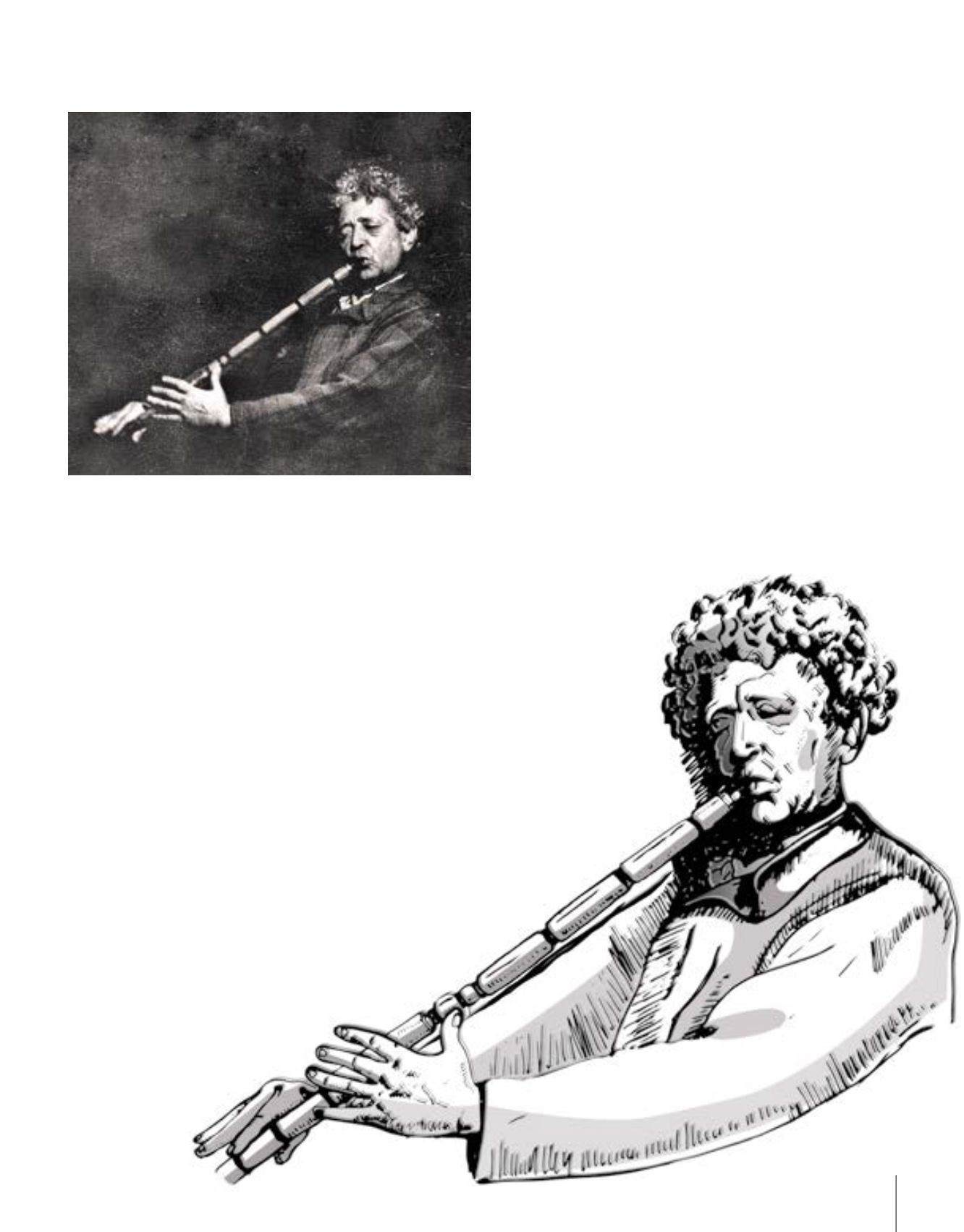
37
türlü baskıyı eleştiren yergi ve
taşlamaları vardı. Derdi hiçbir
zaman tanınmak, bilinmek
olmadı. Onun amacı yalnızca
doğru bildiklerini söylemekti.
Sırtındaki melamet hırkasıyla
yürüdüğü yolunda neyi hep
dudağında, meyi hep elindeydi.
“Bir ot idin, kamış oldun,
ney oldun. Feryadına
karşılık hey hey oldun.
Su, kök, filiz, asma, üzüm,
mey oldun. Her katreni
bana umman edersin.”
Asıl adı Tevfik Kolaylı’ydı.
Kolaylı soyadını babasının
doğduğu yer olan Samsun’un
Bafra ilçesine bağlı Kolay
beldesinden alıyordu. Hayatı
boyunca en uzun süre kaldığı
yer son günlerini geçirdiği
İstanbul’du. 1940’lı yıllardan
itibaren belli aralıklarla Bakırköy
Akıl Hastahanesi’nde kaldı.
Hatta 21 numaralı oda ona
ayrılmıştı. Neyzen sık sık buraya
gelir, bu odayı bir çalışma
odası gibi kullanırdı. Hayatı
boyunca iki kitap yayınladı. Biri
“Hiç (1919)” diğeri ise “Azab-ı
Mukaddes (1949).” Küçük yaşta
karşılaştığı gezgin dervişler
sayesinde tanıştığı neyden
bir ömür boyunca hiç
ayrılmadı Neyzen
Tevfik. Onların üflediği neyin
sesi kulaklarından, zamanla
ustalaştığı neyi dudağından hiç
uzaklaşmadı bir daha. İlk kez
duyduğu andan itibaren o sesin
yanıklığındaki hüznü ve feryadı
hissediyordu çünkü. Nedenini
biliyordu. Neyin, ayrıldığı
sazlığına duyduğu hasreti, tıpkı
bedenlere hapsolmuş insan
ruhunun hasreti gibiydi. Ney,
koparılıp alındığı o sazlığa
nasıl hasret duyuyor, oraya geri
dönmeyi ne kadar çok istiyorsa;
insan ruhu da hapis edildiği
bedeni terk edip, ait olduğu
sonsuzluk âlemine geri dönmek
için öyle yanıp tutuşuyordu.
Neyin sesi, bu çaresiz çığlığı
temsil ediyordu işte.
“Ney sesi tekmil, hava
oldu ateş/ Hem yok olsun
kimde yoksa bu ateş”
Mevlana Celaleddin Rumi
Türk Klasik Müziği için en temel
saz kabul edilen ney, dünyada
insan sesine en yakın sese
sahip. Bu yüzden
çalınmayıp
“üflenen”
ney,
Mental Asylum at certain
intervals starting from the 1940’s.
Indeed, room number 21 was
reserved for him. Neyzen came
here frequently and used this
room as an office. He wrote
two books during his life time.
One was titled “Nothing(1919)”
whereas the other was “Azab-ı
Mukaddes(1949).” He never
once gave up the ney that he
had come to know at a small age
thanks to traveling dervishes.
The sound of their ney never
once left his ears and so he
could never remove the reed flue
from his lips in time becoming
a master of the instrument. He
could feel the sadness and the
scream in that sound from the
very first moment he heard it. He
knew why. The longing that the
ney felt for the reeds that it left
behind resembled the longing
of the human soul trapped in a
body. The ney longed for that
reed bed it was removed from
and desired to go back; just like
the human soul which wanted
to leave the prison of the body
thus returning to the infinite
universe. The sound of the ney
represented this desperate
scream.
“The sound of ney
is full, the air turning
into fire/Let it be lost
in whomever there is
no fire”Rumi
Ney, which is accepted
as the fundamental
instrument for Turkish
Classical Music, has a
sound that is the closest
to that of a human
voice. That is why
ney is not
played but
“blown into” thus giving out the
sound of “hu” meaning “Allah”
and represents the breath that
Allah breathed in men during
creation. Ney is depicted in the
first verses of the Masnavi and
it is a very important element of
Islamic mysticism. Legend has
it that it was the prophet David
who discovered the ney when
passing through a reed bed. The
Prophet David has plucked out
one of the reeds from which an
awe inspiring sound emanated.
He has placed it on his lips and
started blowing. Over time, he
has started expressing his love
of and devotion to Allah using
this reed. Thus the grass has
become a reed and the reed has
become a ney just as Neyzen
Tevfik said.
The word “ney” comes from the
words “na” and “nay” which
entered Persian language
from Sumerian. In Europe it
was known by other names.
It became the
Çizim: Özlem Korkmaz


